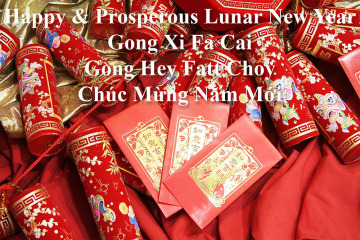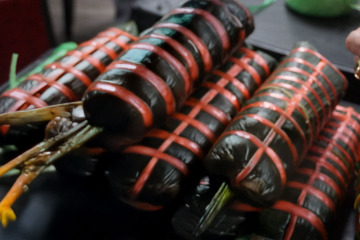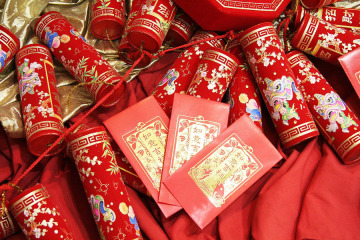Much of Asian communities around the world will celebrate the Lunar New Year soon to welcome the Year of the Dragon. Nian Gao is a popular dessert enjoyed by every household who celebrates the Lunar New Year. Different versions of “Nian Gao” are enjoyed with local influences and flavors.
Nian Gao is made with glutinous rice flour, sometimes steamed and, at other times, cooked in a pan and stirred until thick. It may be savory or sweetened. The Nian Gao given and received as gifts during Lunar New Year is the sweet variety. How it is served varies from region and countries.
Tale behind Nian Gao
There is an interesting story behind this glutinous rice cake which is a must-have especially during Lunar New Year. Rumors has it that it is used to “seal” the lips of the “Kitchen God”, a deity installed in the kitchen of Chinese homes back then. This deity meets up with the Jade Emperor yearly to give a report on the family.
Before that, the family would offer prayers to the deity and this sticky rice cake is one of the offerings to seal his lips. This is to ensure that he would not be able to tell on the family, especially the negative aspects like bickering and misunderstandings that happened. Thus, the family would be in the good books of the Jade Emperor.

There is another reason as to why Nina Gao is a must-have during Lunar New Year. Since it is called “nian gou” in Chinese, it literally means high year! The Chinese loves using these meaningful symbolics in the hope that each year's achievements surpass that of the year before.
Taboos when making Nian Gao
Lots of patience is needed here and there is no shortcut to it. There are some taboos associated with the making of Nian Gao. It is believed that women having their menses would fail to churn out a perfect Nian Gao. There should be no bickering or quarrels during the cooking process for that would also cause the Nian Gao to fail. Well, so much for the superstitions but am not taking any chances since much effort is put into creating this Nian Gao.
Local Flavors & Influences
Philippines “Tikoy”
The Philippines is once considered as the melting pot of Asia. People of different origins call it home – including the Chinese. Chinese customs, traditions, and good food were embraced by the Filipino’s and even make it a part of their own.
Vietnam “Banh To”
Vietnamese people eat nian gao, which they call banh to. They also eat che kho gao nep, a pudding made with sticky rice and a mixture of water, ginger and either sugar or molasses. Other delectables include che kho dau xanh — a mung bean pudding made with coconut milk and sugar — and banh tet chuoi, a glutinous rice cake with bananas.
Malaysia/Singapore/Indonesia “Kuih Bakul”
Kueh Bakul (Nian Gao) is popular amongst Chinese communities in Indonesia, Malaysia and Singapore during the Lunar New Year. It’s a sweet and sticky steamed cake made of glutinous rice flour, water and sugar. The popular variation involves replacing sugar with palm sugar “Gula Melaka” and cooking it via steaming using banana leaves. Locals tends to serve the Nian Gao by frying it along with sweet potato or yam slices or just eggs. Freshly grated coconut are often used to coat the Nian Gao prior to serving.









